Population demographics, habitat use and regional movements of reef manta rays (Mobula alfredi) in Makunudhoo, Maldives and implications for management
2023
Nina Cristiano (MSc Marine Conservation - University of Plymouth)
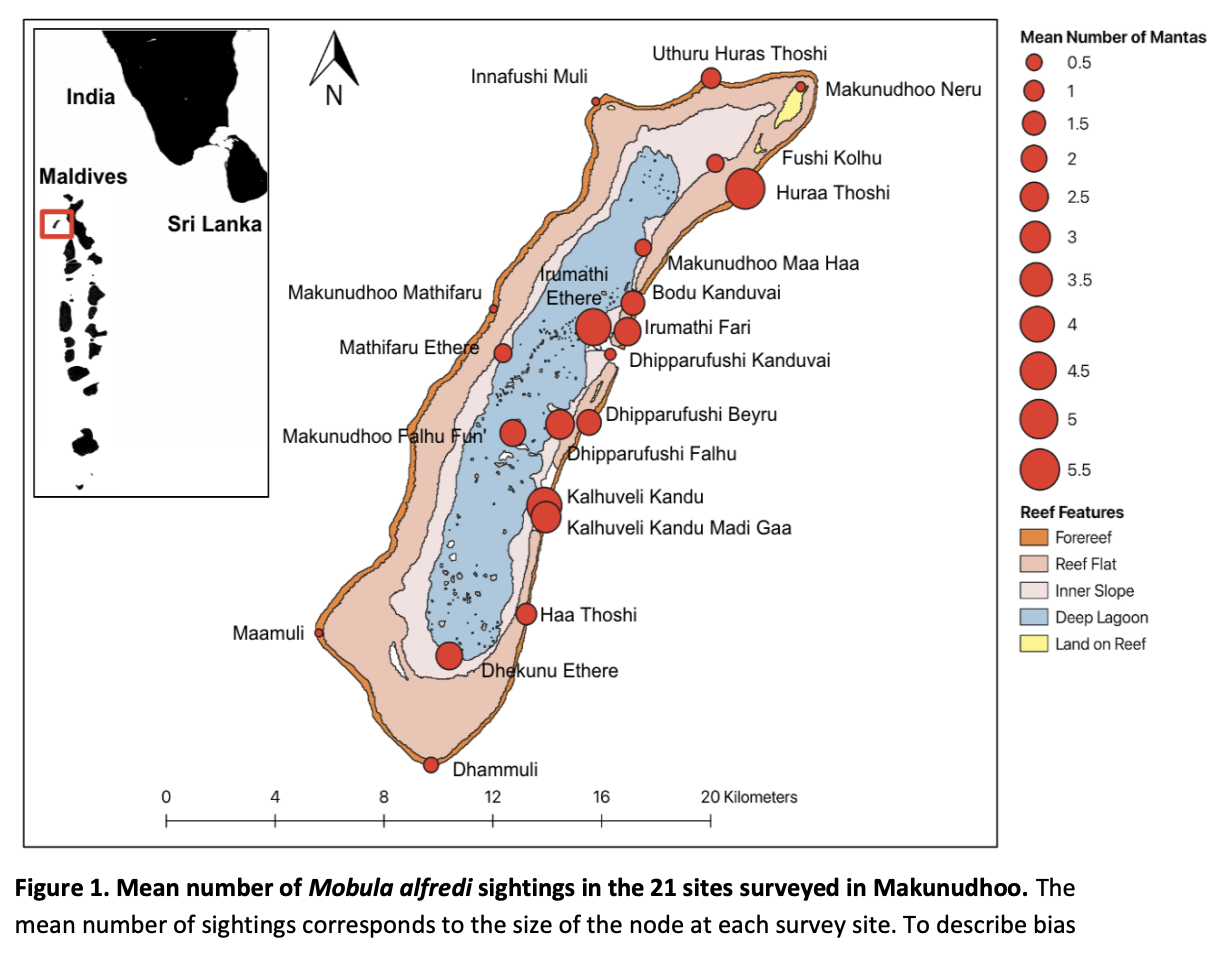
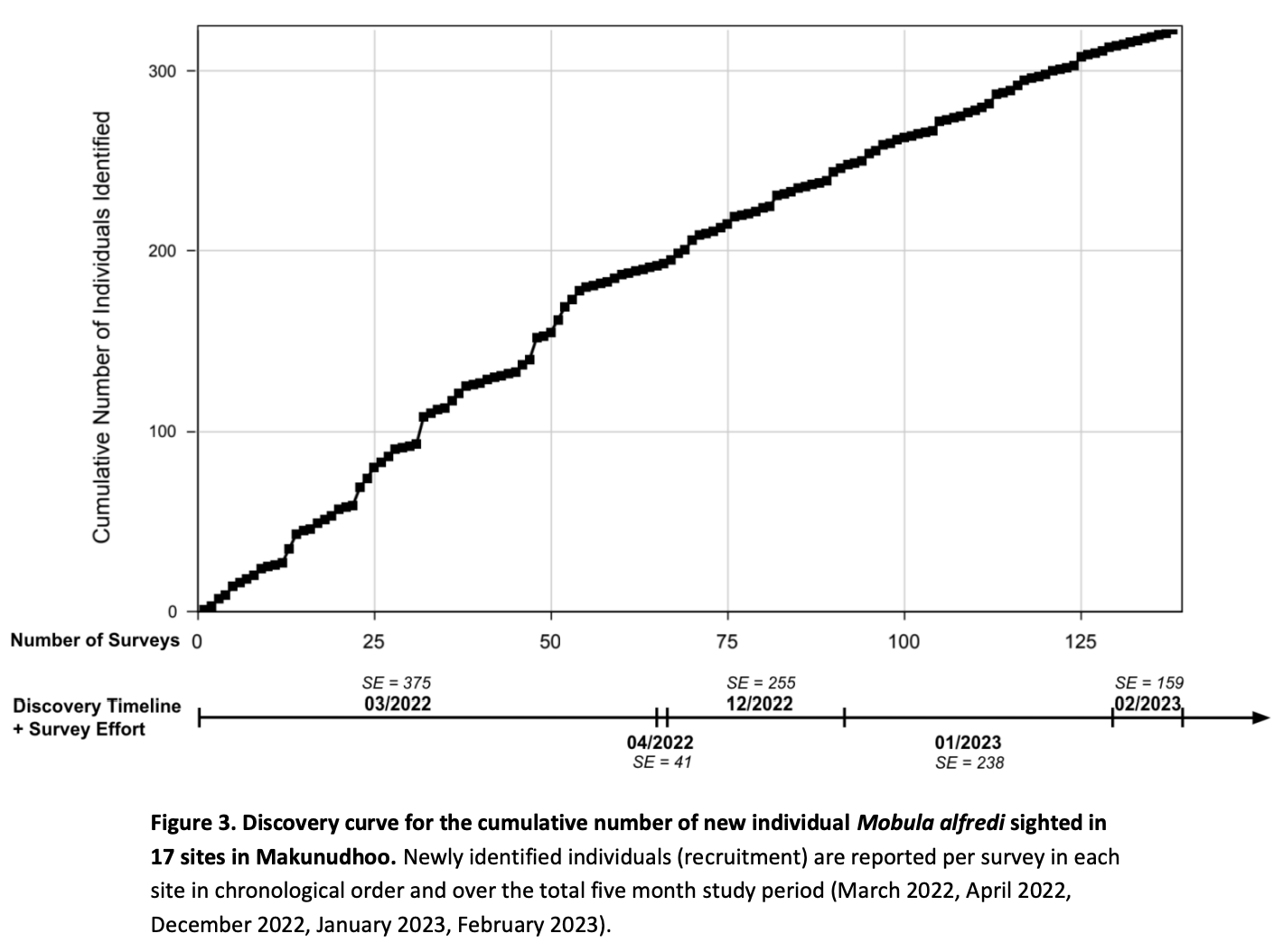
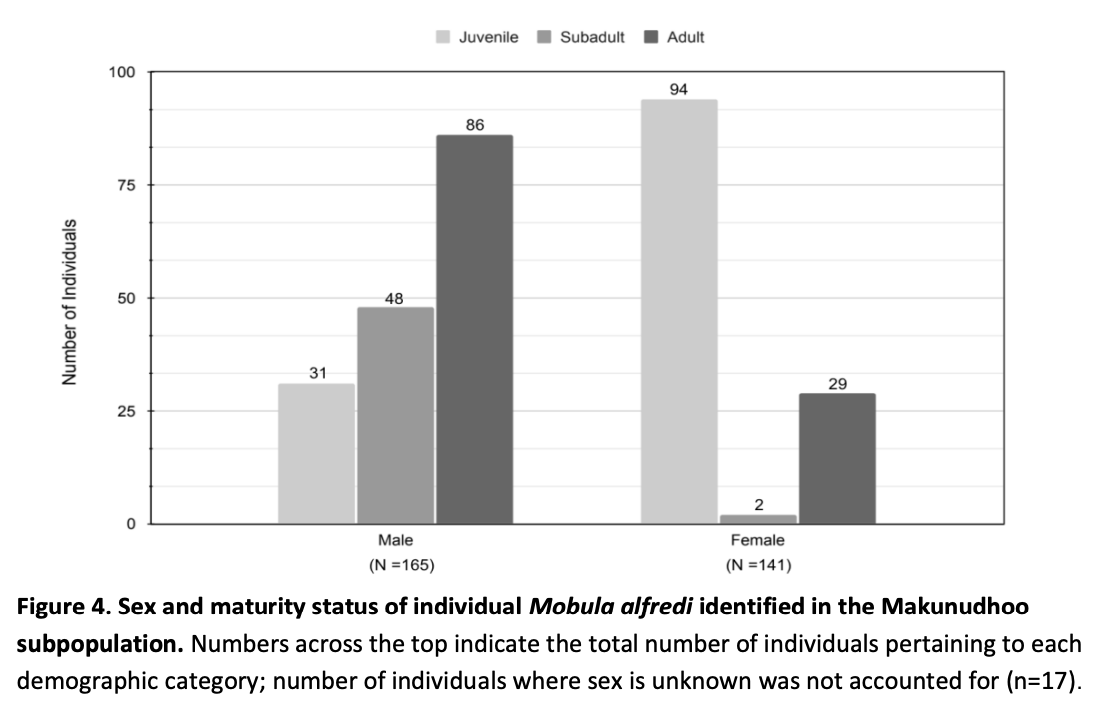

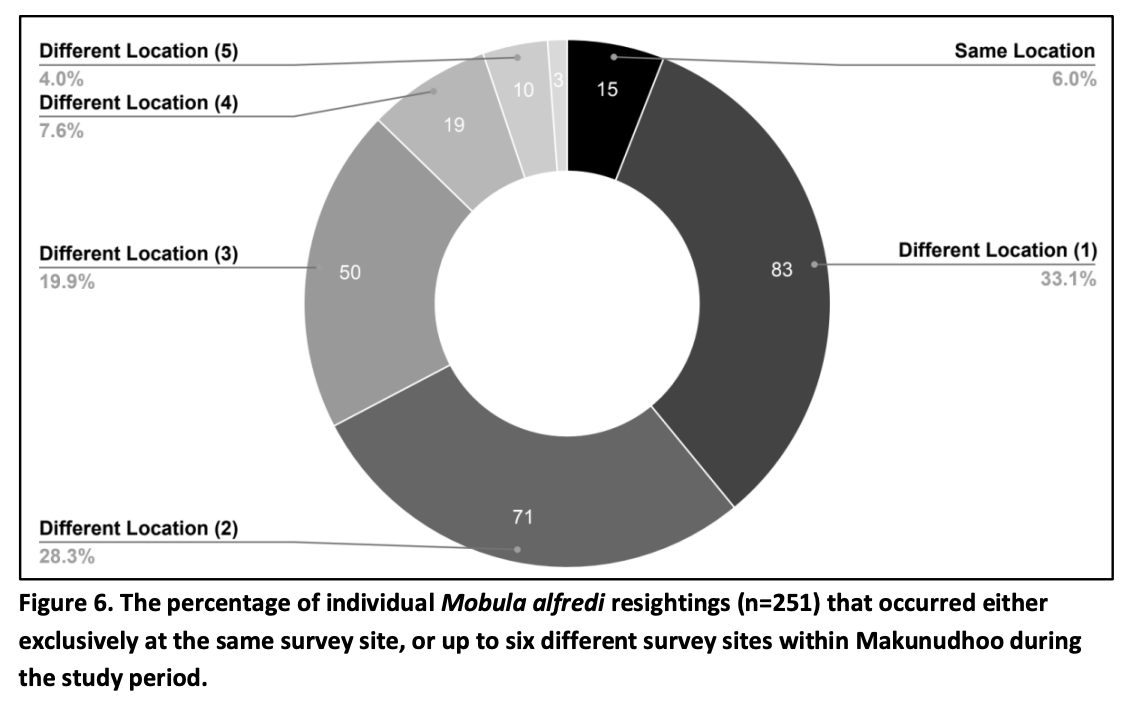
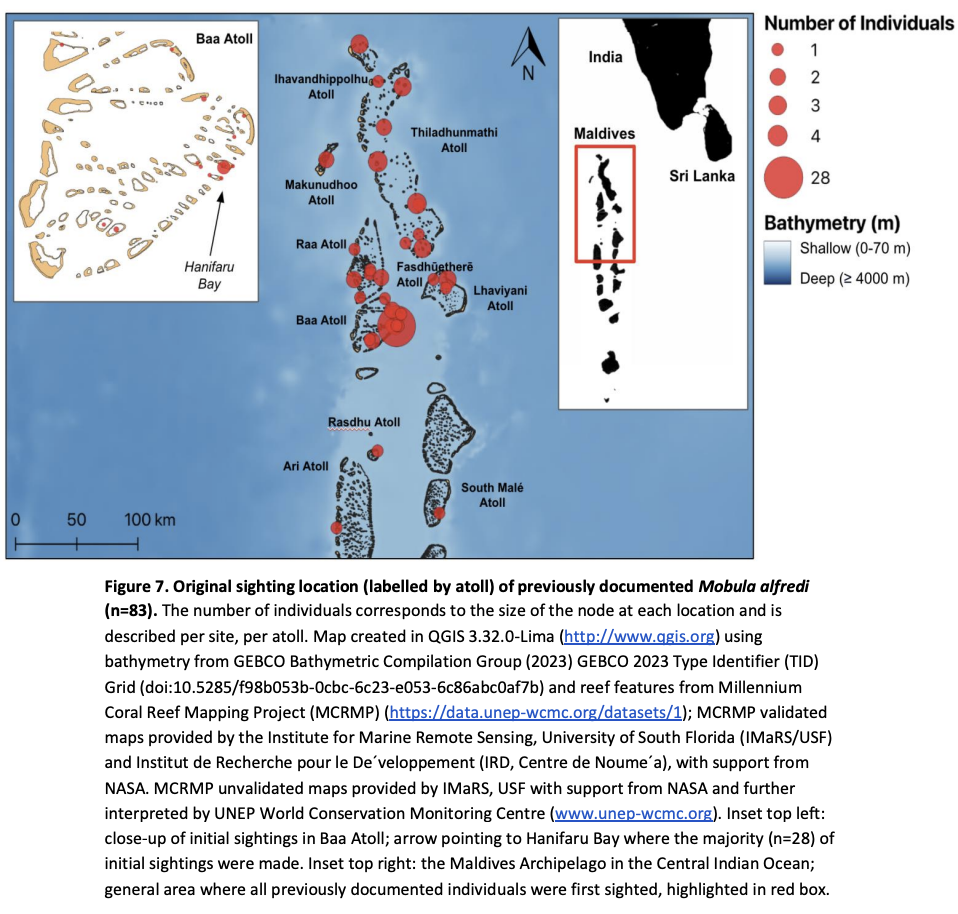
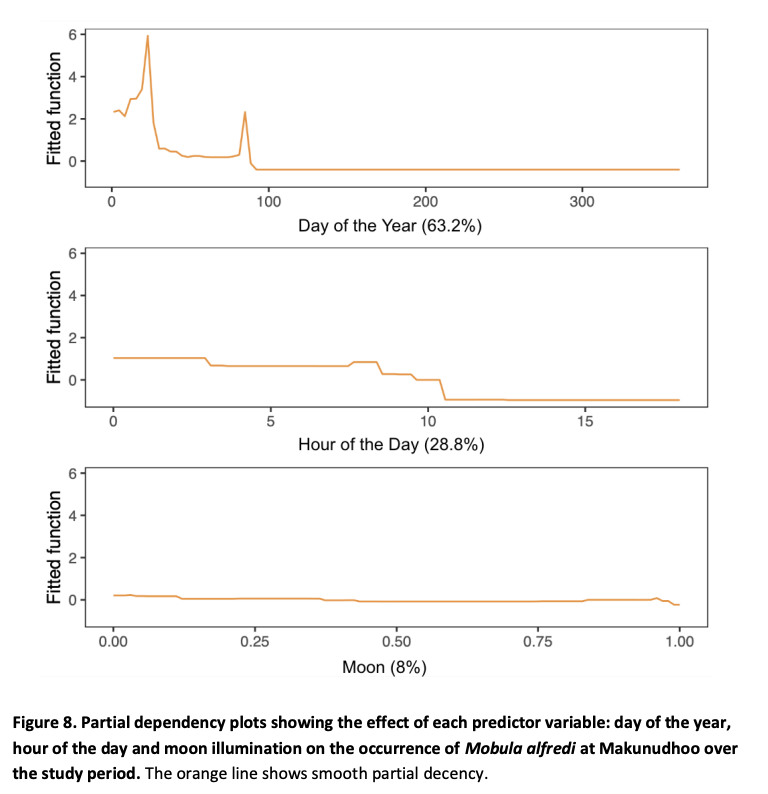
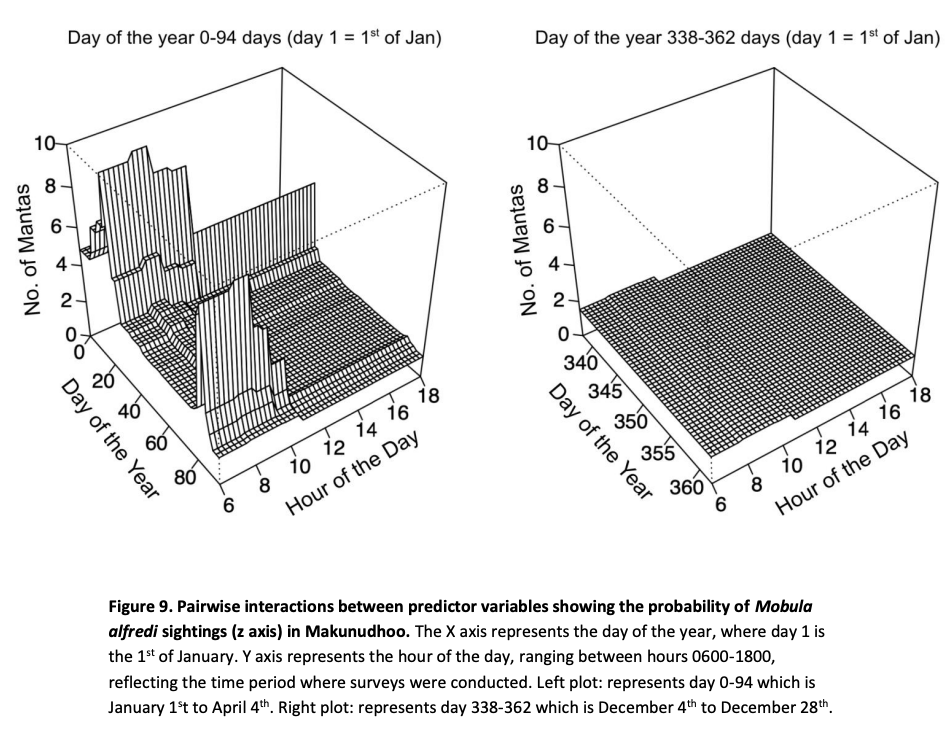
Summary: In the Maldives, reef manta rays face threats from poorly managed tourism. This study, based in Makunudhoo Atoll, which is a less explored area for these manta rays, revealed 1289 sightings, identifying 323 individuals, mostly adult males and juvenile females, marking the area as a crucial nursery. The research pinpointed six key sites for feeding and cleaning. Movement analysis showed their significant appearance in nearby Baa Atoll. Understanding their habits aids in proposing Marine Protected Areas and developing specific conservation strategies amid expanding tourism.
Executive Summary
“The Republic of Maldives, in the central Indian Ocean, is home to one of the largest known populations of reef manta rays (Mobula alfredi). Recognised as one of the ocean’s most charismatic megafauna, a developing tourism industry has made them particularly vulnerable to anthropogenic disturbance as a result of poorly managed ecotourism. It is characteristic for subpopulations to aggregate in “hotspots” to feed, clean or engage in social or reproductive activities. Habitat use is often associated with the South Asian monsoon, where individuals seasonally migrate to areas following ocean productivity due to their reliance on prey density. The predictable spatio-temporal distribution of populations, coupled with their conservative life histories, facilitate their vulnerability to tourism exploitation (e.g. direct injury, altered aggregation behaviour) and can hinder long-term survivorship.
Distribution and movement patterns of M. alfredi in more remote northern atolls are under researched. Here, photographic identification (photo-ID) records of natural ventral marking patterns were collected in Makunudhoo, Haa Dhaalu Atoll, to investigate their presence in this north-western region. Sightings data was collected at 21 sites across the atoll between 2022 and 2023, in months that reflected the north-east (NE) monsoon (December to April). The number of sightings and individuals were used to assess population demographics; habitat use; site affinity; and regional movements. Boosted regression tree (BRT) modelling was also used to assess the relative influence of, and interaction between temporal predictor variables (hour of the day, day of the year) and moon illumination on sighting probability in the atoll.
A total of 1289 M. alfredi sightings were recorded at 17 different sites. Of 323 individuals identified in this study, 240 (74.3%) were new identifications, and 83 (25.7%) were previously documented. The rate of new identifications over the survey period suggests the size of the subpopulation exceeds the number of individuals identified in this study. Demographic data revealed that the majority of the subpopulation was made up of adult males (26.6%) and juvenile females (29.1%); suggesting that Makunudhoo is an important nursery area. A total of six key aggregation sites (>100 sightings) were identified, five of which were appointed important feeding areas and one of which was classified as a cleaning station. Same sight resightings occurred between one and eight times by 243 individuals, demonstrating a variation in site affinity among individuals and between sites. Inter-atoll movement was assessed, revealing that the majority of previously documented individuals were first sighted in Baa Atoll (≈ 134 km away). Ultimately, BRT modelling demonstrated that the probability of sightings was mostly influenced by day of the year (63.2%). A positive interaction effect between temporal predictor variables demonstrated that sightings are most likely to peak in January between 0800-1100.
This is the first photo-ID study conducted on M. alfredi in Makunudhoo Atoll. Findings related to the subpopulation’s demography, key areas of habitat use, and movement patterns will help to inform species management in light of imminent tourism expansion. Understanding the use of this atoll, particularly by juveniles, can both validate the need for their protection in the form of Marine Protected Areas (MPAs), and highlight priority areas made aware by this study. Data can also be used to help inform regulations specific to the region, and to the species, inspiring more comprehensive management in future development plans.”
Author Affiliations
University of Plymouth
The Manta Trust
Maldives Manta Conservation Programme
